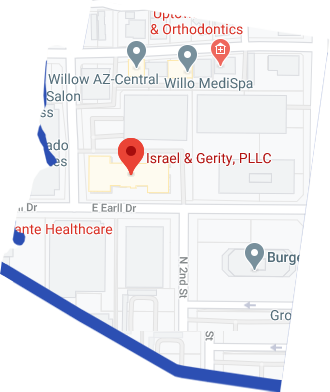Filing for bankruptcy doesn’t have a particular friendly ring to it. While some people will find the experience to be quite simple and easy, others will find themselves having a very troubled time as they lose more assets than they had originally estimated they would. This is never enjoyable.
This is why we’d like to explore which of your assets are protected during bankruptcy and what steps you can take to protect your assets which aren’t naturally protected. To begin with, we need to look at the asset protection exemptions that Arizona law has in place.
What Assets are Protected by Law in Arizona?
Asset protection exemptions is the language we use to refer to the different types of assets that Arizona law works to protect from creditors in the case of a bankruptcy filing or a judgment. You may have heard these referred to as “statutory exemptions.” Arizona law is written in such a way as to offer these asset protections to all residents.
Some of the items protected from bankruptcy in Arizona are:
- Up to $150,000 of equity in your primary homestead.
- Household goods up to $6,000 in value such as furniture and appliances.
- $300 in cash.
- Clothing up to $500 in value.
- Musical instruments up to $400 in value.
- Pets.
- A wedding ring up to $2,000 in value.
- Books up to $250 in value.
- A bicycle up to $1,000 in value.
- A firearm up to $1,000 in value.
- A computer up to $1,000 in value.
- A car up to $6,000 in value.
- A wheelchair.
- Required medical equipment.
- Up to $5,000 for tools of the trade; this refers to necessary tools to continue running your business or keeping your employment and it can include websites and marketing tools as well as physical tools.
Also protected is the cash value of a life insurance policy. However, the life insurance policy must have been in place for at least two years and it must name a surviving spouse, child, parent, brother/sister or other dependent family member as the beneficiary to qualify for this protection.
Another protection in place covers assets caught up in a qualified retirement plan. This includes 401(k), 403(b) and TSA accounts. Arizona law takes a few more steps in protecting retirement assets when compared to other states. But watch out, because recent contributions are not protected.
What are the Drawbacks of Relying on Arizona’s Asset Protection Exemptions?
It’s great that Arizona offers so many protections to its citizens but these protections don’t go as far as many people would like. It isn’t that there is a problem with what is protected. The problem is that what is protected is really only those essential assets that a person needs. Additional assets are not protected and this can make filing for bankruptcy a scary thing, as it means losing more of your belongings than you would like.
Before you file for bankruptcy, it is always a smart idea to make a thorough list of your assets. By getting all of your assets written down, you can go through them and see what is protected and what isn’t ahead of time. This will give you the knowledge you need to make an informed decision about filing for bankruptcy. If your most important assets are already protected then it might be easiest to simply file for the bankruptcy.
But if you have assets you would like to protect that aren’t covered by the Asset protection exemptions Arizona has in place then you’ll want to seek further protection before filing.
What are Other Ways to Protect My Assets?
There are a few ways in which you can further protect your assets, though all the minutiae can get rather complicated to sort out:
- Asset Protection Trusts: While expensive to establish and maintain, an asset protection trust can do exactly what it’s name implies. It allows you to transfer your assets into a trust which is insulated from your personal assets. There are a lot of hoops that have to be jumped through when setting up an asset protection trust and so it can be quite difficult for some.
- Stripped-Out Equity: Another option is to draw the equity out of an one asset and put it into an asset that the state protects. Again, this is a very specific tactic that doesn’t work for everyone and can be quite difficult to set up if you aren’t sure what you are doing.
- Making Needed Repairs: You could spend excess funds making needed repairs to some of your exempt assets, such as your house or car.
- Prepaying Expenses: You can also prepay certain expenses, catch up on certain payments, and make purchases of certain necessities. Figuring out which expenses qualify is the key with this tactic.
- Invest in Retirement: Since retirement plans are protected by the state, it is possible to liquidate assets or use cash in excess of the $300 limit to invest into a retirement plan. Of course, you will lose the assets that you liquidate for now, and if you need them later, you would have to purchase them again down the road.
If these sound confusing, don’t worry. It is extremely important to note that none of the above steps can be taken with the intent to hinder, delay or defraud a current creditor, and you can easily forfeit your rights to a discharge by making asset transfers prior to filing for bankruptcy. As such, planning steps are exceptionally dangerous without a thorough understanding of the ins and outs of the process. Understanding what you can and cannot do prior to filing for bankruptcy is just one small part of what a lawyer does in a bankruptcy representation.
How can I Best Protect My Assets During a Bankruptcy?
If there is one thing that we hope you take away from all of this, it is that navigating through the waters of bankruptcy and asset protection are difficult but not impossible. There are many different options available to you when it comes to protecting your assets but they can be quite the pain to figure out. Get them wrong, and not only can you lose your assets, but you can also cost yourself a discharge, or even face criminal charges.
That’s why the best way to protect yourself from greater losses than necessary during your bankruptcy is to work with an attorney who is experienced in asset protection. Here at Israel & Gerity, we make it our business to understand what happens when you file for bankruptcy. To see what can be done to protect your assets, give us a call at (602) 654-6540.





